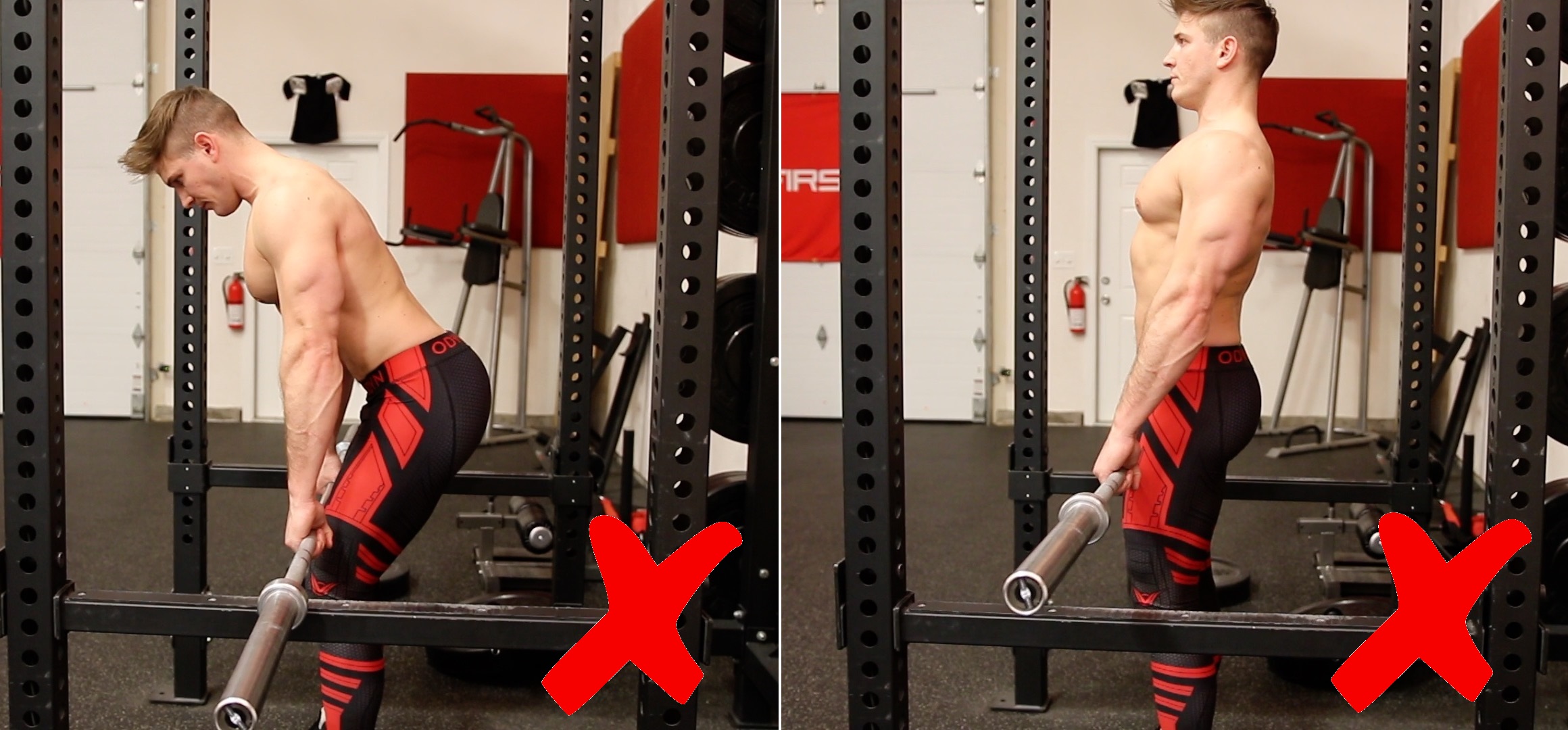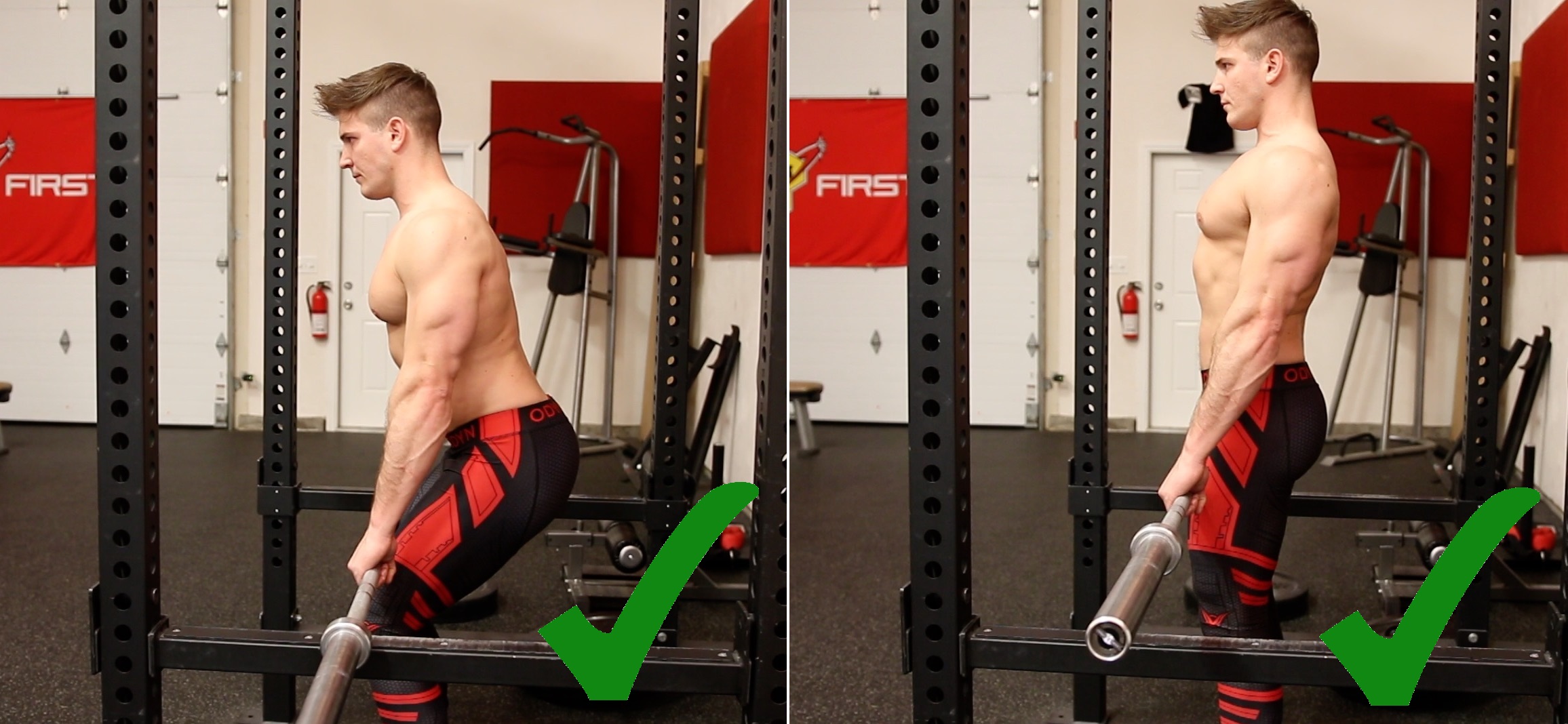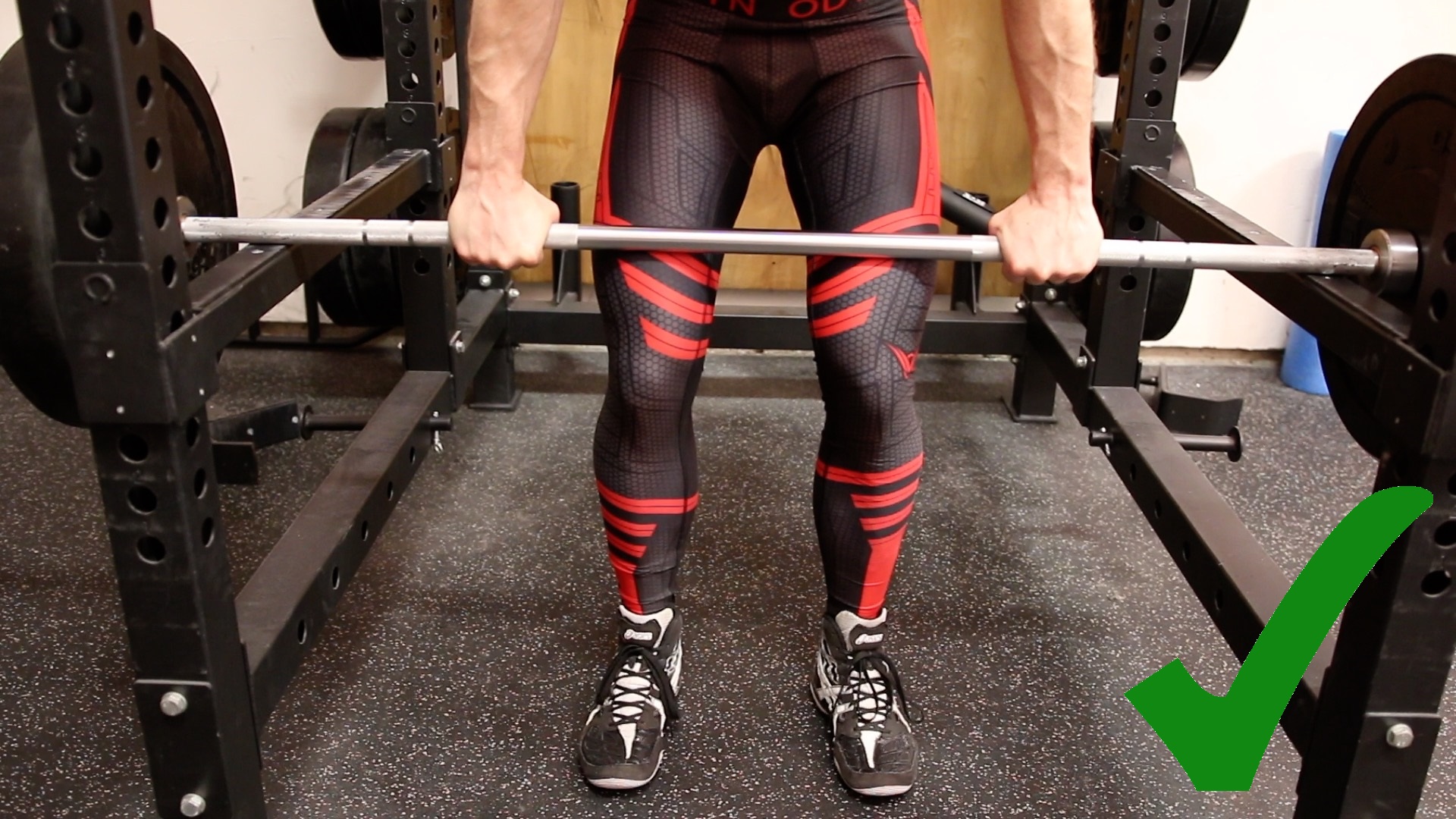3 Mistakes Holding Back Your Trap Growth!
Fix Now!
Today I’m going to go over 3 fundamental mistakes that people make when performing the above the knee rack pull, which can hinder trap growth over time, and can also lead to lower back pain. First thing’s first, when doing a rack pull, in order to lift as much weight as possible, everything starts at the set-up.
Mistake #1: Racks Are Not Set High Enough!
The first mistake I see people make is they do not place the barbell at the right height in order to maximize the efficiency of the movement. The above the knee rack pull is not an exercise that requires a big range of motion. All you have to make sure that you’re doing, is when you lift barbell off the rack, and you’re at the top of the movement, that you’re able to let your traps have a deep, DEEP stretch, and that the barbell or weights are not touching the rack. As soon as you’re done with holding the bar at the top position for a second or two, you bring it back down.


The miscommunication here happens because people think that because the exercise name is ‘above the knee’, that the barbell literally has to be just above the knee-cap, but that’s not true. For me, I have the bar set-up about 3-4 inches above my knee, because like I said, you don’t want a big range of motion.


Mistake #2: Wrong Foot Placement!
The second thing you need to do when doing this exercise to maximize how much weight you can lift, is you need to get the heels of your feet UNDERNEATH the barbell. In order to lift as much weight as possible, you need to push through your heels to lift that weight. However, in order to do that you have to get really close to the barbell, and your legs have to partially go underneath the bar so you can actually grab it.
If the barbell is too low, there would be no way you could fit your knees under the bar. What happens then, is that instead of getting under the barbell and pushing through your heels to do the movement, you actually end up starting with your feet back a bit. That slight movement back is going to cause you to bend over to grab the weight. You’ll still be pushing through your heels and your hips to lift the weight off the racks, but what you’re also going to start doing is lifting with your lower back. It would turn into a combination of pushing through your hips, heels, and pulling with your lower back, whereas if you’re right where you need to be and working through a small range of motion, there is no bending of the lower back.
Mistake #3: Not Resetting Form After Wrapping Wrist Straps!
I think this is where things really start to go downhill, and that is when people start using wrists straps. From what I notice in the gym, most people when it’s time to start using wrist straps for above the knee rack pulls, is they bend over into an incorrect position to wrap the straps around the barbell. There’s actually nothing wrong with this, but problems occur when people stay in their bent-over position as the starting point for the movement after wrapping their straps into place.
At this point, the barbell isn’t even touching the thighs. The barbell should be on your thighs as soon as you’re about to pull the weight off the racks. But when people bend over to put their wrist straps on, they just kind of start from there to begin the lift, and continue to bend over to lift the weight. This is NOT what you want to do, as it will very quickly put pressure and pain through your lower back.
Conclusion
It’s these 3 basic, fundamental set-up movements that you should be doing, otherwise it can cause you to not be able to lift as much weight. Unfortunately, a lot of people turn really quickly to a lifting belt on this exercise to compensate, possibly for the lower back pain they are getting because they’re pulling too much with their back, and not pushing through their heels. So the next time you do your above the knee rack pulls, I want you to really focus on getting that barbell as high as possible. Then, when you go in for the set-up, get your heels under the bar, and then when you lift the bar off the racks, push through your heels to get to the top position. Even when you bring the bar back down, bring it back down the same way as it came up – by squatting down, NOT by bending over.








